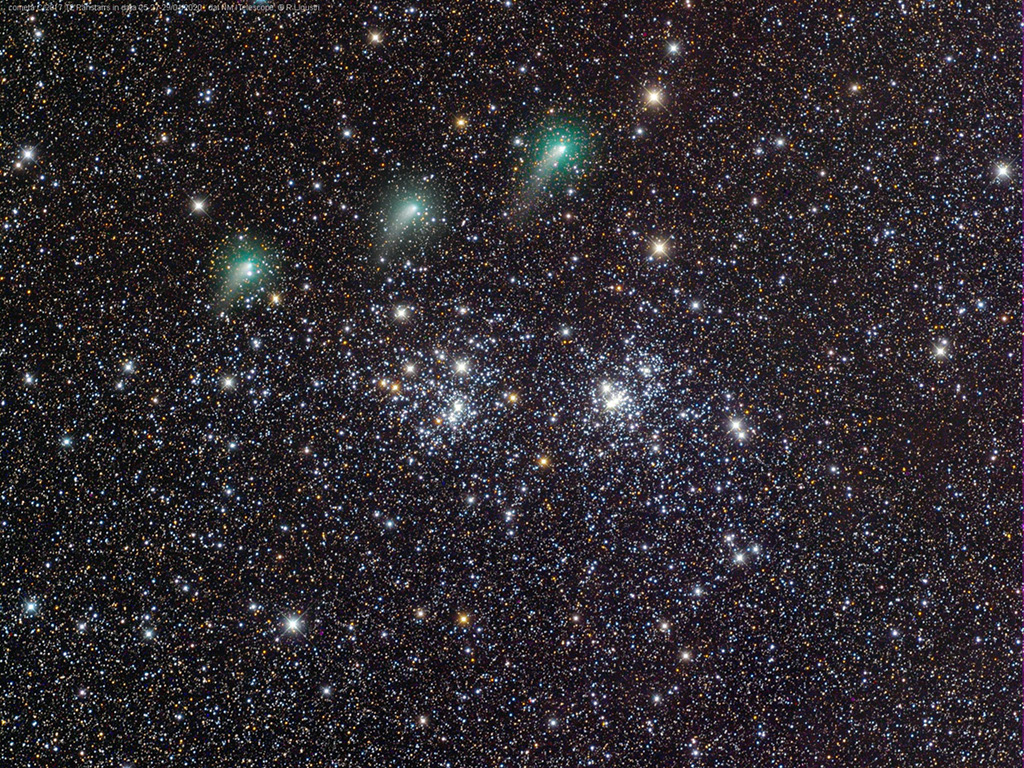2020 January 30
Two Clusters and a Comet
Image Credit & Copyright: Rolando Ligustri (CARA Project, CAST)
Explanation: This lovely starfield spans some four full moons (about 2 degrees) across the heroic northern constellation of Perseus. In telescopic exposures made during the nights of January 24, 26, and 28 it holds the famous pair of open or galactic star clusters h and Chi Persei with comet PanSTARRS (C/2017 T2) captured each night as it swept left to right across the field of view. Also cataloged as NGC 869 (right) and NGC 884, both star clusters are about 7,000 light-years away and contain stars much younger and hotter than the Sun. Separated by only a few hundred light-years, the clusters are both 13 million years young based on the ages of their individual stars, evidence that they were likely a product of the same star-forming region. Discovered in 2017 while still beyond the orbit of Saturn, Comet PanSTARRs is a new visitor to the inner solar system and just over 13 light-minutes from planet Earth. Always a rewarding sight in binoculars, the Double Cluster is even visible to the unaided eye from dark locations. C/2017 T2 could remain a telescopic comet though. One of the brightest comets anticipated in 2020 it makes its closest approach to the Sun in early May.
双星团与彗星
影像提供与版权 : Rolando Ligustri ( CARA Project , CAST )
说明: 这片涵盖北天英仙座的美丽星野,跨幅约有4个满月(2度)的宽度。由摄于1月24日、25日及26日晚的望远镜照片叠成的这幅影像,呈现了泛星彗星(C/2017 T2)在这3个晚上,由左向右掠过著名的h与Chi双星团之景像。编录号分别为NGC 869(右)及NGC 884的双星团,二者皆离地球约7,000光年远,而且成员星都远比太阳年少与炽热。彼此相隔只有数百光年的双星团,根据它们成员星的年龄来推断,星团的年龄约为1千3百万年,因此它们可能是形成于同个恒星形成区。2017年发现时,位置仍在土星轨道后方的泛星彗星,是内太阳系的新到访者,拍照时离地球略远于13光分。而永远是双筒望远镜观星热点的双星团,则是在无光害地区裸眼可见的天体。今年5月初将行进到近日点的C/2017 T2,或许会一直是透过望远镜才得见的彗星,不过,它已是2020年预期可见的彗星中最明亮者之一。








爱天文本少女支持NASA!辛苦啦天天翻译这么多注意身体哦,记得勤洗手戴口罩多消毒啊
好看!加油永远支持NASA!